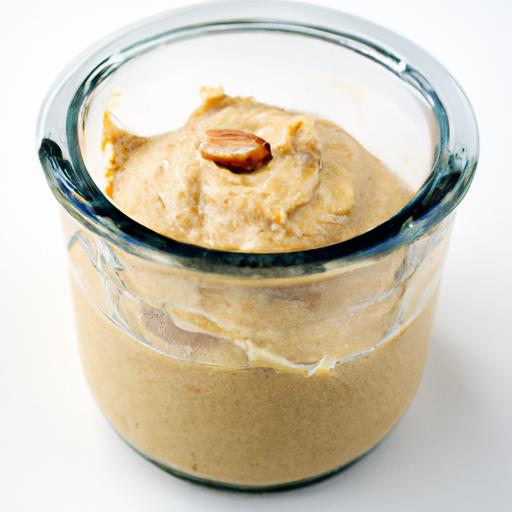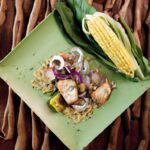In a world overflowing with store-bought options, there’s a quiet art rediscovering the roots of our food-literally. Crafting nut butter is more than just a culinary endeavor; it’s a journey back to nature’s bounty, a celebration of patience, skill, and the rich flavors nestled within each nut. Imagine foraging your own ingredients, transforming simple, handpicked treasures into creamy, wholesome spreads that tell a story of the earth and season. This guide invites you to roll up your sleeves and embark on an earthy adventure, blending the primal joy of gathering with the satisfying craft of creating your own natural nut butter-pure, personalized, and bursting with character.
Crafting Nut Butter: Forage Your Own Natural Spread is a delightful journey that transforms humble nuts and seeds into luscious, creamy treasures teeming with flavor and nutrition. This homemade indulgence taps into ancient culinary wisdom, embracing the richness of wild foraged ingredients to awaken your palate and elevate everyday moments. Imagine the satisfying rhythm of roasting freshly gathered almonds or walnuts, the aroma filling your kitchen, culminating in a velvety, golden nut butter perfect for toast, smoothies, or drizzle over roasted veggies.
Prep and Cook Time
Preparation: 15 minutes
Roasting Time: 12-15 minutes
Processing Time: 10-15 minutes
Total: Approximately 40-45 minutes
Yield
About 1 to 1¼ cups of rich, smooth nut butter
Difficulty Level
Easy to Medium – Perfect for beginners willing to experiment and seasoned home chefs looking to add a wild touch.
Ingredients
- 2 cups raw or lightly roasted mixed nuts (almonds, walnuts, pecans, or hazelnuts)
- ½ cup seeds (pumpkin, sunflower, or hemp seeds work beautifully)
- 1-2 teaspoons high-quality sea salt (adjust to taste)
- 1-2 tablespoons neutral oil (grapeseed, walnut, or avocado oil, optional for creaminess)
- 1 tablespoon natural sweetener (raw honey, maple syrup, or date syrup, optional)
- Wild-foraged boosts: 1 tablespoon crushed pine nuts, 1 teaspoon dried wild herbs (like lemon thyme or wild rosemary)
Instructions
- Prepare your nuts and seeds. If using raw nuts, roast them at 350°F (175°C) for 12-15 minutes until golden and fragrant, stirring halfway to ensure even toasting. Seeds can be toasted lightly in a dry skillet over medium heat for 3-5 minutes.
- Cool the roasted nuts and seeds. Allow them to rest at room temperature so oils release gradually, enhancing flavor and texture during blending.
- Begin processing. Add nuts and seeds to a high-powered food processor or nut butter grinder. Pulse initially to break them down.
- Blend continuously. Process for about 10 minutes, scraping down the sides every 2 minutes. The mixture will transition from crumbled nuts to gritty, then creamy. Patience here yields the perfect spread.
- Incorporate wild-foraged ingredients. Add crushed pine nuts and dried herbs halfway through blending to infuse subtle forestry notes that complement the nutty base.
- Adjust texture and taste. Once creamy, drizzle oil slowly to loosen the butter if desired. Add sea salt and sweetener to balance flavors, blending briefly after each addition.
- Check consistency. For thicker nut butter, pulse sparingly; for a smoother cream, blend longer with oils. Transfer to airtight glass jars immediately.
Tips for Success
- Selecting Nuts and Seeds: Choose the freshest nuts with intact skins and no rancid odors. Foragers should confirm safe identification of wild nuts such as hickory or black walnuts.
- Roasting: Avoid over-roasting which causes bitterness. A light golden hue preserves natural oils and enhances flavor.
- Equipment: A powerful food processor with sharp blades is essential for a smooth finish without overheating the nuts.
- Wild Foraging Insight: Incorporate seasonal, edible flowers like calendula or mild herbs harvested sustainably from your local environment to add complexity and antioxidant power.
- Storage: Store in sealed jars in the refrigerator for up to 3 weeks. Gently warm before use to soften hardened oils.
Serving Suggestions
Spread your nut butter lavishly on toasted rustic bread, drizzle with local honey, and sprinkle with crushed wild herbs for a gourmet breakfast. Use as a creamy dip for crisp apple slices or celery sticks for a quick, nutritious snack. Incorporate into sauces, salad dressings, or swirled into oatmeal for added depth. For a visual feast, garnish with a scattering of crushed pine nuts and a sprig of fresh wild thyme-every bite delivers a taste of nature’s best.
| Nutrient | Amount (per 2 tbsp) |
|---|---|
| Calories | 190 kcal |
| Protein | 6 g |
| Carbohydrates | 7 g |
| Fat | 16 g (mostly healthy unsaturated) |

For those eager to deepen their knowledge of wild foraging safety and seasonal harvests, visit Wild Food UK – an excellent resource curated by expert foragers.
Don’t miss our detailed guide on How to Make Almond Butter at Home to explore more textures and flavors within your nut butter adventure.
Q&A
Q&A: Crafting Nut Butter: Forage Your Own Natural Spread
Q1: What exactly is nut butter, and why should I consider making my own from foraged nuts?
A1: Nut butter is a creamy, spreadable paste made from ground nuts. While store-bought varieties abound, crafting your own from foraged nuts allows you to connect deeply with nature, control the ingredients, and savor fresh, preservative-free flavors tailored to your taste buds. Plus, it’s a sustainable, rewarding way to enjoy the bounty of the wild.
Q2: Which nuts are best suited for foraging and turning into homemade nut butter?
A2: Walnuts, hazelnuts, chestnuts, and pecans are among the prime candidates. Acorns can work too, once properly leached to remove their bitterness. Knowing your local flora and the seasons when nuts are ripe is key. Foraging responsibly ensures you gather nuts that are ripe, clean, and abundant enough to spare the wildlife.
Q3: How do I identify safe and edible nuts in the wild?
A3: Identification requires careful research-using field guides or apps and consulting local experts helps avoid toxic lookalikes. Look for nuts that have fallen naturally and aren’t moldy or overly damaged. Remember, ethical foraging means taking only what you need and leaving plenty for the ecosystem to thrive.
Q4: What’s the basic process for transforming foraged nuts into creamy nut butter?
A4: Start by cleaning and drying your nuts thoroughly. Roast them gently to deepen flavor and ease grinding. Then, pulse the nuts in a food processor or blender until they release their oils and form a buttery consistency. Add a pinch of salt or a drizzle of honey if you like. The journey from crunchy nut to luscious spread is surprisingly simple but magically transformative.
Q5: Can I customize the flavor of my nut butter?
A5: Absolutely! Experiment with adding natural flavors like cinnamon, vanilla, or even a dash of chili for a spicy kick. Mixing different nuts or stirring in roasted seeds creates unique profiles. Because you control every ingredient, the possibilities are as wild and creative as the forest itself.
Q6: How should I store homemade nut butter to keep it fresh?
A6: Store your nut butter in a clean airtight jar in the refrigerator. The cool environment slows oxidation, maintaining freshness and preventing rancidity. For nut butters made without preservatives, consuming them within a couple of weeks is best to experience peak flavor.
Q7: What benefits come from eating your own foraged nut butter?
A7: Beyond the pure delight of homemade goodness, foraged nut butter is nutrient-rich, packed with healthy fats, protein, and vitamins. It’s a natural, additive-free alternative to commercial spreads. Plus, the mindful act of foraging and making your own food can cultivate gratitude, patience, and a deeper bond with the environment.
Q8: Is foraging nut butter practical year-round?
A8: Nut foraging is generally seasonal, aligned with the nut-bearing cycles of trees-mostly autumn. However, once you gather and preserve nuts, you can enjoy your homemade spreads throughout the year. Planning ahead and storing nuts safely helps bridge the gap between seasons.
Crafting your own nut butter from foraged nuts is more than a culinary project-it’s a journey into nature’s pantry. With some knowledge, care, and creativity, you can turn the simple nut into a luscious, wholesome spread that tells a story of wild abundance. Happy foraging!
The Way Forward
As you embark on your journey to craft your own nut butter, remember that each jar carries the story of nature’s bounty and your hands’ gentle alchemy. Foraging your own ingredients not only connects you to the earth but also transforms a simple spread into a celebration of flavor, texture, and wholesome goodness. So gather your nuts, trust your instincts, and savor the satisfaction that comes with every creamy, homemade spoonful-a natural indulgence crafted by you, for you.


